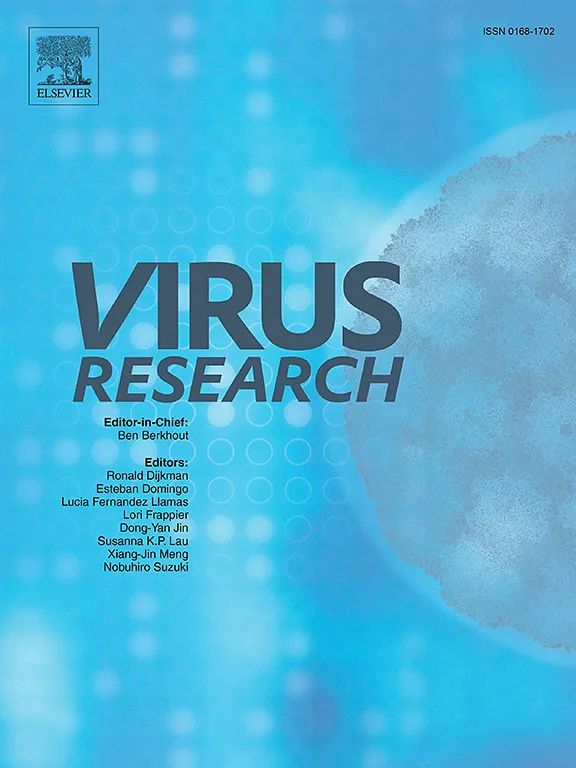Regulation of inflammatory cytokines and activation of PI3K/Akt pathway by Yiqi Jiedu Formula in recurrent Herpes Simplex Keratitis: Experimental and network pharmacology evidence
IF 2.5
4区 医学
Q3 VIROLOGY
引用次数: 0
Abstract
Objective
This study investigates the therapeutic effects of the Yiqi Jiedu (YQJD) formula on Herpes Simplex Keratitis (HSK) induced by herpes simplex virus type 1 (HSV-1) and elucidates its mechanisms of action through experimental and network pharmacology approaches.
Methods
Active ingredients of the YQJD formula were identified using UPLC-HRMS. Network pharmacology was employed to predict shared targets between YQJD and HSK, focusing on the PI3K/Akt signaling pathway. Molecular docking was performed to assess the interaction between key ingredients and targets. In vivo, an HSK mouse model was used to evaluate the YQJD formula's impact on corneal lesions and inflammatory factors. In vitro, human corneal epithelial cells (HCECs) were infected with HSV-1 to assess the formula's effect on IL-4 expression.
Results
UPLC-HRMS identified 34 compounds in YQJD, with Isovitexin and Formononetin exhibiting high oral bioavailability. Network analysis revealed 97 intersecting targets, implicating the PI3K/Akt pathway in YQJD's mechanism. Molecular docking showed strong affinities between IL-4, IL-6, and YQJD compounds. In vivo, YQJD significantly improved corneal lesions and modulated the expression of IL-4, IL-6, and AKT. In vitro, YQJD-containing serum regulated IL-4 expression in HCECs post-HSV-1 infection.
Conclusion
The YQJD formula ameliorates Herpes Simplex Keratitis by regulating inflammatory cytokines and activating the PI3K/Akt pathway, offering a potential therapeutic strategy for HSK.
益气解毒方对hsv -1性角膜炎炎症因子调控及PI3K/Akt通路激活的实验及网络药理学证据
目的:研究益气解毒方对单纯疱疹病毒1型(HSV-1)所致单纯疱疹性角膜炎(HSK)的治疗作用,并通过实验和网络药理学方法探讨其作用机制。方法:采用超高效液相色谱-高效液相色谱法对复方中有效成分进行鉴定。网络药理学预测YQJD和HSK的共同靶点,重点关注PI3K/Akt信号通路。通过分子对接来评估关键成分与靶点之间的相互作用。在体内,我们采用HSK小鼠模型来评估YQJD方对角膜病变和炎症因子的影响。体外用HSV-1感染人角膜上皮细胞(HCECs),观察复方对IL-4表达的影响。结果:hplc - hrms共鉴定出34个化合物,其中异牡荆素和刺芒柄花素具有较高的口服生物利用度。网络分析发现97个交叉靶点,提示PI3K/Akt通路参与YQJD的机制。分子对接表明,IL-4、IL-6和YQJD化合物具有较强的亲和力。在体内,YQJD显著改善角膜病变,调节IL-4、IL-6和AKT的表达。体外,含yqjd的血清可调节hsv -1感染后HCECs中IL-4的表达。结论:YQJD方通过调节炎症因子和激活PI3K/Akt通路改善hsv -1诱导的角膜炎,为HSK提供了一种潜在的治疗策略。
本文章由计算机程序翻译,如有差异,请以英文原文为准。
求助全文
约1分钟内获得全文
求助全文
来源期刊

Virus research
医学-病毒学
CiteScore
9.50
自引率
2.00%
发文量
239
审稿时长
43 days
期刊介绍:
Virus Research provides a means of fast publication for original papers on fundamental research in virology. Contributions on new developments concerning virus structure, replication, pathogenesis and evolution are encouraged. These include reports describing virus morphology, the function and antigenic analysis of virus structural components, virus genome structure and expression, analysis on virus replication processes, virus evolution in connection with antiviral interventions, effects of viruses on their host cells, particularly on the immune system, and the pathogenesis of virus infections, including oncogene activation and transduction.
 求助内容:
求助内容: 应助结果提醒方式:
应助结果提醒方式:


